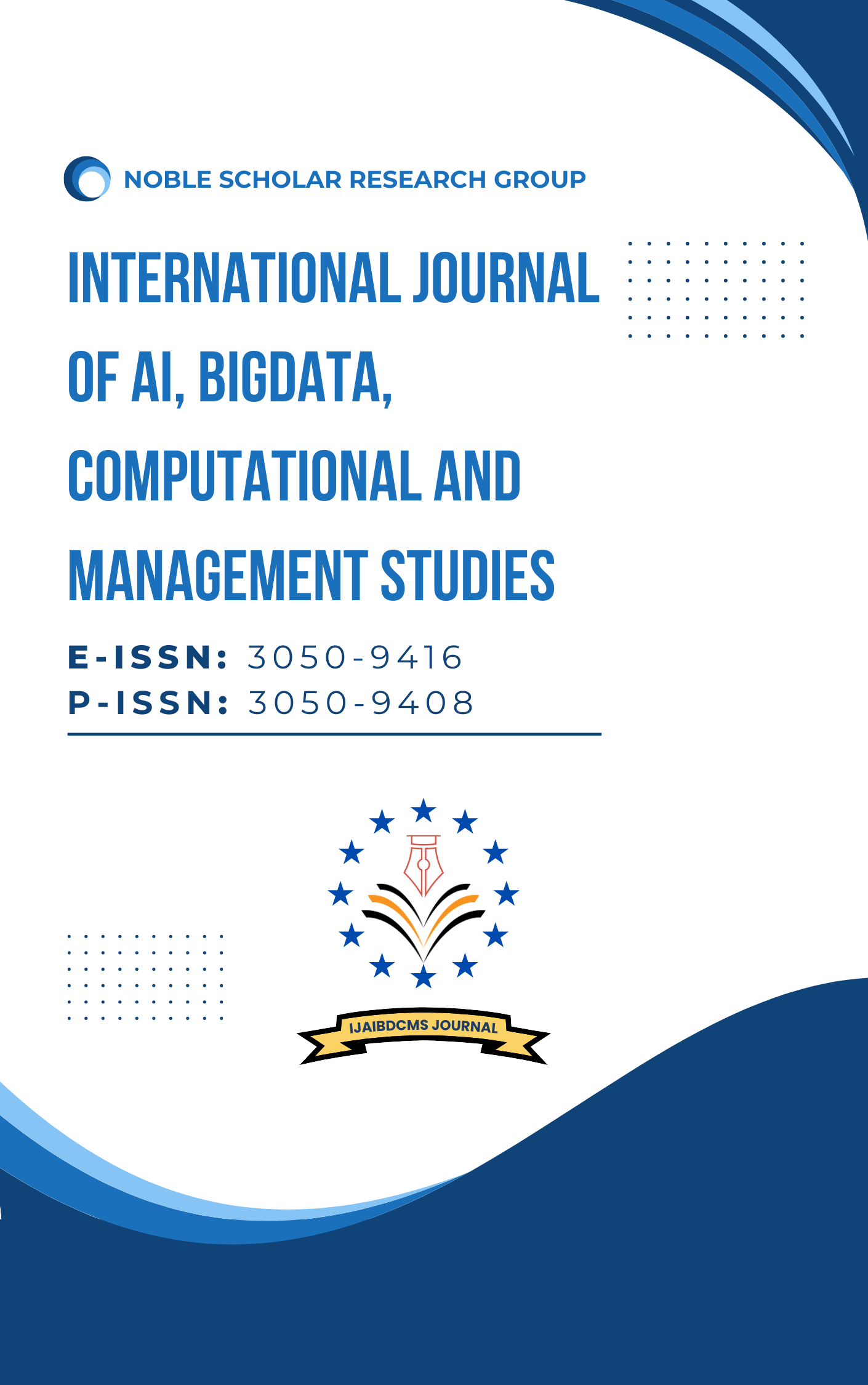Enterprise Resource Planning (ERP) Systems as Catalysts for Supply Chain Optimization: A Multi-Case Evaluation
DOI:
https://doi.org/10.63282/3050-9416.IJAIBDCMS-V1I3P105Keywords:
Enterprise Resource Planning, Supply Chain Optimization, Sap, Oracle, Microsoft Dynamics, Inventory Management, Real-Time DataAbstract
Operational excellence and improved supply chain are now possible thanks to Enterprise Resource Planning (ERP) systems in various sectors. In this paper, I examine the impact of ERP systems on improving supply chain processes, using cases from manufacturing, retail, and logistics. This investigation explores how ERP links supply chain elements like procurement, production planning, inventory management, and logistics, and it includes studying any improvements found after ERP has been implemented. Using information from earlier than 2020, this research explores how ERP systems are integrated, their barriers to using them, their chief success elements, and what data is collected after they are established. It examines how supply chain processes are changing with the help of automation, clear visibility, timely synchronization, and the advanced analytics provided by platforms such as SAP, Oracle, and Microsoft Dynamics. Interviews, reports on performance, and an analysis of system architecture support the qualitative and quantitative case study. Data reveals remarkable improvements in order fulfilment times, the rate at which stock moves, accurate demand forecasts, and the overall ability of the supply chain to survive. The report finds that ERP systems make business processes consistent and support important supply chain transformations. Recommendations are available for people who want to use ERP systems to align all supply chain operations
References
1. Akkermans, H. A., Bogerd, P., Yücesan, E., & Van Wassenhove, L. N. (2003). The impact of ERP on supply chain management: Exploratory findings from a European Delphi study. European Journal of Operational Research, 146(2), 284-301.
2. Antero, M. C. (2015). A multi-case analysis of the development of enterprise resource planning systems (ERP) business practices. Frederiksberg: Copenhagen Business School (CBS).
3. Madu, C. N., & Kuei, C. H. (2005). ERP and supply chain management. Chi Publishers Inc.
4. Stefanou, C. (1999). Supply chain management (SCM) and organizational key factors for successfully implementing enterprise resource planning (ERP) systems. AMCIS 1999 proceedings, 276.
5. Davenport, T. H. (1998). Putting the enterprise into the enterprise system. Harvard Business Review, 76(4), 121–131.
6. Klaus, H., Rosemann, M., & Gable, G. G. (2000). What is ERP? Information systems frontiers, 2, 141-162.
7. Fui‐Hoon Nah, F., Lee‐Shang Lau, J., & Kuang, J. (2001). Critical factors for successful implementation of enterprise systems. Business Process Management Journal, 7(3), 285-296.
8. Markus, M. L., Tanis, C., & Van Fenema, P. C. (2000). Enterprise resource planning: multisite ERP implementations. Communications of the ACM, 43(4), 42-46.
9. Al-Mashari, M., Al-Mudimigh, A., & Zairi, M. (2003). Enterprise resource planning: A taxonomy of critical factors. European journal of operational research, 146(2), 352-364.
10. Rashid, M. A., Hossain, L., & Patrick, J. D. (2002). The evolution of ERP systems: A historical perspective. In Enterprise resource planning: Solutions and management (pp. 35-50). IGI Global.
11. Goldston, J. (2020). The evolution of ERP systems: A literature review. The Evolution of ERP Systems: A Literature Review, 50(1), 17-17.
12. Barney, J. (1991). Firm resources and sustained competitive advantage. Journal of Management, 17(1), 99-120.
13. Bingi, P., Sharma, M. K., & Godla, J. K. (1999). Critical issues affecting an ERP implementation. Inf. Syst. Manag., 16(3), 7-14.
14. Davis, F. D. (1989). Perceived usefulness, perceived ease of use, and user acceptance of information technology. MIS Quarterly, 319-340.
15. Esteves, J., & Pastor, J. (2001). Enterprise resource planning systems research: an annotated bibliography. Communications of the association for information systems, 7(1), 8.
16. Gable, G., Sedera, D., & Chan, T. (2003). Enterprise systems success: a measurement model.
17. Shanks, G. (2000). A model of ERP project implementation. Journal of Information Technology, 15(4), 289-303.
18. Soh, C., Kien, S. S., & Tay-Yap, J. (2000). Enterprise resource planning: cultural fits and misfits: is ERP a universal solution? Communications of the ACM, 43(4), 47-51.
19. Markus, M. L., & Tanis, C. (2000). The enterprise systems experience-from adoption to success. Framing the domains of IT research: Glimpsing the future through the past, 173(2000), 207-173.
20. Kurbel, K. E. (2013). Enterprise resource planning and supply chain management. Functions, Business Processes, and Software for Manufacturing Companies. Progress in IS. Springer, Dordrecht.



